Sci-Fi Sound Design Tutorial
Today’s science fiction movies are as much a treat for the ears as the eyes, but how are those otherworldly sounds created? Liam O’Mullane has the lowdown.
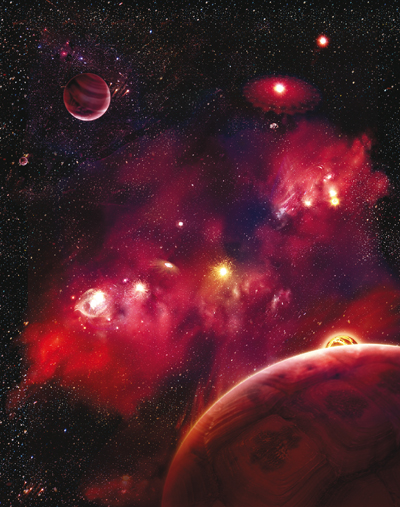
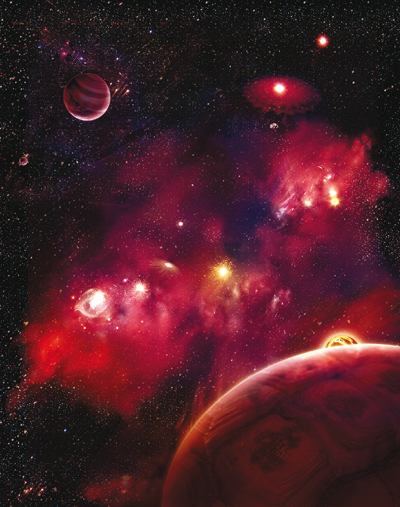
Anyone who’s seen a science fiction movie knows the importance of sound for creating a believable environment. If done right, the mix of typically larger-than-life movie sonics are combined with unique textures and tones of explorative sound design, creating an aurally stunning experience.
Here we’re looking at the building blocks of those sounds, showing you how to create the types of sound effects demanded in the science fiction world. We’re also aware of the different uses for science fiction sounds – perhaps for a movie soundtrack project, or a showreel to strengthen your CV, audio for games, themed samples packs or sounds for a website. Numerous modern electronic genres are also using these types of sounds to create vivid sonic imagery within songs, but whatever your reasons, the techniques covered in this feature will enable you to create the sounds you’re after.
Organic And Synthetic Sound
Using Codes
We’ll be using some of these codes as starting points for each element of sci-fi sound design, but if you’re unsure as to where to start, check out some reference material to see what type of sounds have been used before and build from there.
We’ve broken the general areas of designing sci-fi sound into four logical sections. These will cover the starting points for every kind of sound required. They are: transport, mechanics and movements, aliens, soundscapes and atmospheres. By following the techniques covered in these sections you will be able to confidently create and experiment with sound for your own requirements.
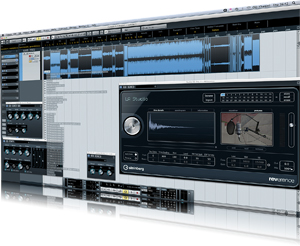
Explore how your plug-ins interact with different sound sources by dragging a random selection of audio files into your DAW to hear how certain effects react with each sound. Make a note of the best combinations and create variations on the same theme to start building up your library
Transport
Anyone who’s into their sci-fi movies will be aware of classic movies like Aliens, Star Wars and the more recent Transformers. Although earlier movies such as Stanley Kubrick’s Space Odyssey 2001 used silence to portray the rules of science, it did feature some aspects of sound design that are still present in movies today. The rumble inside a big spaceship is a good example for this.
The typical rumble we’re referring to would be from a spaceship that’s usually the size of a city; in general, these will also be slow-moving. A real-world equivalent would be a large ferry. Taking a cue from this comparison, you can imagine it will have a low, consistent tone, so you’re looking for something along these lines, with a decent duration to avoid looping and editing, but slight variation so it doesn’t sound too static.
A common source to record for this task is an office fan or a car engine. Both have a constant pitch but also the variation in tone you’ll require for long periods of playback. Once they’re recorded, use vari-speed to pitch them down a few semitones, shifting everything down into those rumbling, sub-frequencies. Next you’ll want to roll off some top end with an EQ or filter. This will help to emphasise the low end even more. To create the effect of this sound from inside the ship, scoop out the mid-frequencies to approximate the frequency attenuation of the walls and interior. For outside scenes you can leave it as it is.
Lighter and more agile craft have more intricacies of sound to consider, as there will most likely be a lot more movement to portray. You should be thinking of questions, like: What sort of engine is it using? Is it a new and powerful craft, or is it old and tired?
A new craft would have a single tuned and strong sound to it. An older craft would probably sound like it has less power, with the odd rattling part for realism. To achieve a high-torque-type of engine noise you can go into the tool shed and grab a circular saw, power drill or even set the household washing machine to spin. You can pitch up the recording to create the sense of a craft that’s small in size, or pitch it down for a bit more grunt. Layering different sources like this or having higher- and lower-pitched copies of one source helps to give the impression that more is going on under the hood.
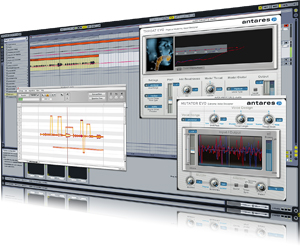
You can get a range of vocalised sounds for aliens by starting with your own voice and using processing tools such as Avox Throat or Melodyne’s Formant tool.
These are good starting points, but to give you an idea of other possible places to begin, the super-fast sound of the Tie Fighters in Star Wars was created using recordings of an elephant’s whining noise mixed with the sound of a car rolling down a drive.
Similar tones to the Tie Fighter can be created from scratch with some FM synthesis coupled with pitch-bending to get a rise-and-fall whining sound, although it can be harder to synthesise convincing sounds due to the lack of natural variation. There are benefits to using synthesis, though. You can accurately time and mould your sounds to picture using automation, which can be re-programmed at any time during production. To get started with FM synthesis, check out how we’re using it to create unique tones in the two step-by-steps.
Mechanics And Movements
Sounds for mechanics and other non-organic movements can be relevant for a spacecraft’s landing gear or movement of its wings (when preparing to accelerate into hyper-drive, for example). However, this section also relates to movements for machines such as a robot, when you’ll need to create various sounds to represent its movements.
Single impact noises are a good starting point and they can be recorded from hitting a variety of objects. The nearest thing to you right now is perhaps a door, which when banged hard with the side of your fist can yield a good thud with a tight decay afterwards. Slamming a door and pitching the recording down can work for something bigger in size. For something more metallic-sounding, slamming a car door is recommended. These types of noises can be used for footsteps, jumps, combat and more, but alone they may sound a little sterile.
For movement on metallic surfaces or ruins, add recordings of a chain dropping on a hard surface, or fill a can with loose metallic objects and walk with them. Layering these kinds of sounds with impact noises can be very convincing.
Finally, you’ll need sound for the motion of moving mechanical parts. Hydraulic sounds are good for this. A motor sound followed by the occasional blast of air is a classic sequence. Look for motor sounds as they are all around you. Take the opening and closing of a DVD player’s tray, for instance. It has a consistent motor noise that gives a good thud at the end of its travel when it closes. Other sources include an electric toothbrush, beard shaver or toy car.
The air element can be as simple as a blast of white noise with a faded decay from a synth; for something more organic, try spraying water onto a hot object like an iron or electric hob (take care with water and electrics!). To finish your sequence, add a pitch descent to the end, giving the impression of a final winding down, followed by an obligatory final blast of air.
Weapons are an element that go hand-in-hand with movement sounds and are a little harder to source yourself as many come from actual artillery sounds. These are modified with pitch and liberal processing of modulation effects like a phaser for a more sci-fi tone. The more tongue-in-cheek weapons of old B-movies are, however, easy to create using an FM synth. A laser gun starts life as a harmonically interesting oscillator tone (much like that in our Transformers step-by-step). You then add strong pitch modulation at a medium rate to get that blast of energy-type sound.
To create fast, single shots that can be rapidly repeated for an automatic weapon sound, use the same starting point but without the pitch modulation. Then use a fast attack and decay on the amp envelope to create a short transient. With the sustain and release set to low values, this will instantly drop to a quick fade-out so it doesn’t end too abruptly.
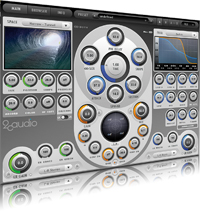
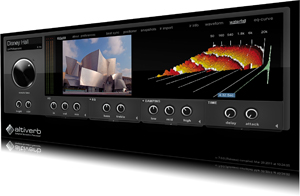
If you’re creating a lot of synthetic sounds you’ll still need to create a convincing space. A good-quality reverb such as Altiverb from Audio Ease or Aether from 2C audio are good places to start.
Aliens
It’s rare to find a space-based sci-fi film without aliens of some sort in it. Again, there are certain sonic elements we expect to hear and these are a good place to begin. In terms of general movement, many aliens have a wet, slimey complexion, so squelchy noises are a must. Start your search for sounds in the kitchen and look for raw foods like oranges and other fruit that’s soft on the inside to squeeze and poke. If you need something that’s more gloopy, you can always make a thick liquid from flour and water. Move objects in and out of it or squeeze a sponge after a dunk for an oozing sound.
Vocalising aliens is always an interesting task and the form can be split into two categories: animal or intelligent. Grunts, growls, yelps and so on are simple vocalisations and can be taken from real animal sources, or you can make these with your mouth. Either way, you’ll want to experiment with re-pitching them to the familiar principles of lowering the pitch for larger and aggressive tones, and raising it for smaller animals. To get a really large-sounding alien roar, try adding a pitch or harmoniser plug-in. A pitched-down roar with added higher pitches can create a beast that sounds quite demonic.
Creating an intelligent alien language can take quite a considerably longer commitment of your time, but you can start from real-world sources. Benn Burtt created many languages in Star Wars by finding recordings of rare languages that had the quality he was after in them. He’d then edit them to create a library of building blocks for his new language. After constructing sentences from these blocks, he’d have them re-recorded by an actor.
Ben Burtt also did the sound design for the vocalisations of the two robots WALL•E and Eve (or Eva, as we know it) who star in the movie WALL•E. Their voices were the result of a much less organic process. Although initial sentences were recorded by a human, Ben manipulated them with sound-processing tools until he found the right combination of source sound and processing. He used the Kyma audio processing system by Symbolic Sound to do this, but you can create some equally engaging sounds by manipulating the human voice or animal recordings with the formant tools in Celemony’s Melodyne or the various manipulation tools included in Antares’ Avox Vocal Toolkit.
Soundscapes And Atmospheres
Now you have an idea of how to create the direct sounds required for a convincing sci-fi sequence, you’ll need to think about ambience and surroundings. If the picture you’re working to create is within a spacecraft, the low rumble covered at the start of this feature might be enough. But not all sci-fi scenes are placed in space. Any planets other than ours will need to be designed.
Many planet scenes in movies use familiar sounds from earth, like weather. For instance, you can go for a dry and barren landscape, much like our deserts, with the sound of wind as the main sonic backdrop. Flourishing plant life can be associated with trickling water; record the rustle of foliage moving in the breeze and some general, wildlife chatter. Even though a scene may not have any creatures in-shot, it’s important to add details like these to help make the ambience convincing. To look at the movie WALL•E again for a moment. The post-apocolyptic planet where the robot lives uses a recording of Niagra Falls as its backdrop.
This is filtered and placed through an echo chamber for a unique tone. The second element mixed in was the sound of dragging a heavy bag over a carpeted floor. This created a long version of the sound you might get when rubbing two synthetic materials quickly together. The two sounds combined create a wind-like backdrop that also has an element of wailing, haunted souls created by the bag recording.
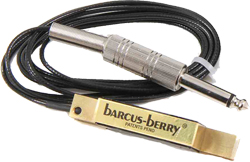
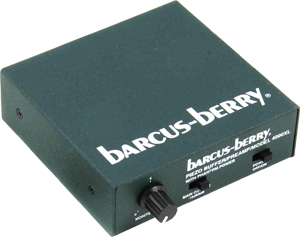
The piano and harp 4000 contact mic and preamp from barcus-berry is a popular choice with sound designers due to its broad frequency range pick-up
Holding Back
With all these potential sound sources, editing options and processing in a modern DAW, much like mixing a song, less is definitely more when it comes to achieving strong sounds that are necessary to portray the story. Too much layering can rob sounds of their power, and gaps are just as important as sonic events, so make sure you are prepared to ditch sounds that don’t work and constantly question the relevance of each layer in your work to keep things simple and direct.
By this point you should know that there are no hard-and-fast rules when it comes to creating sci-fi sounds. However, with the starting points we’ve offered, you should have the confidence to explore and persevere in the pursuit of creating the ‘right’ sound to convey an image either onscreen or that you want to put into the listener’s mind.